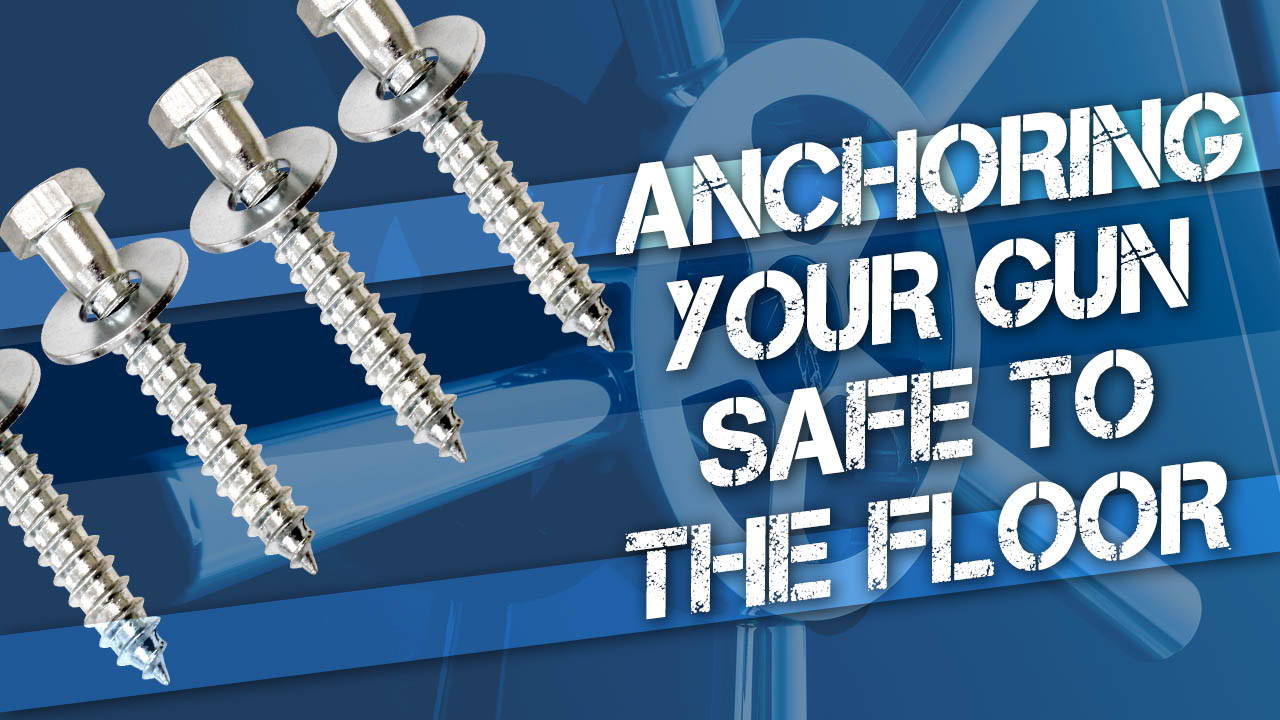Anchoring a gun safe involves using bolts and/or anchors to firmly secure it to any floor. Here are a few things you should know about why anchoring is so important and how different flooring types determine how it should be done.
Should You Anchor Your Gun Safe?
You should always anchor your safe to the floor. Anchoring helps prevent damage to your home and accidents that could result in injury or even death to a loved one if your safe tips over. If putting bolts into your floor has you saying, “No way,” consider the damage a 1,000-pound safe can do if it tips over.
An unanchored safe can also damage your flooring. If your safe is correctly leveled and anchored, you can avoid scuffs, scratches, dents, carpet tears, or crushed wood. Some floors need special tools, bases, and bolts to properly anchor your safe.
Bolting your safe to the floor can also help prevent thieves from being able to crack your safe open and grab the contents. Prying the door off a safe is typically much easier if you can tip the safe over on its back. That gives you more leverage to pry up on the door. Don't make it easy for would-be thieves: protect your family and your valuables and bolt your safe down properly.
Things to Consider Before Anchoring
How a safe is anchored depends not only on the kind of flooring but also the sub-flooring. You need to know what’s under your floor before installation to determine what type of anchors and bolts you require. If you have a basement or a crawlspace, subfloors on the mania level are generally plywood with joists underneath for support. If you don’t, or if your safe is going in your basement, you'll likely need concrete anchors.
How to Anchor through Softer Materials
Anchoring your Liberty gun safe on hardwood, carpeting, vinyl, linoleum, or laminate installed on top of a wood subfloor requires our safe-anchoring kit for wooden subfloors. To directly bolt your safe down, you’ll lift the floor panel of the safe and remove its floor caps to find the pre-cut anchoring holes.
- Drill a ¼-inch hole in your floor in each of the four anchoring locations.
- Place the kit’s washers on the anchor bolts.
- Using a 9/16" socket set, secure the bolts in the drilled holes.
- Replace the floor caps and floor panel.
How to Anchor through Harder Materials
Anchoring your Liberty gun safe on a concrete subfloor is a little more complicated. You’ll need the anchoring kit for concrete and a hammer drill.
- Remove the safe’s floor panel and floor caps to find the pre-cut anchoring holes.
- Drill a hole in the floor at each of the four anchoring locations with a 3/8 concrete drill bit.
- Hammer the anchor bolts into the holes and tighten them with a ½-inch socket set.
What about tile? You can set a safe on a tile floor, you just need to make sure the weight is evenly distributed so you don't crack your flooring. Unfortunately, you can't anchor a safe to a tile floor. When you bolt the safe down you'll put too much pressure on the tile and crack it.
No matter what kind of floor you have, unless you have experience moving and installing gun safes, this job is best left to a professional. An experienced installer will know the best ways to install your gun safe. Contact your local Liberty dealer to find an installer near you. For more information on what to expect when your safe is delivered, click here.




